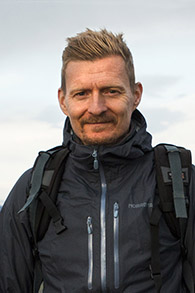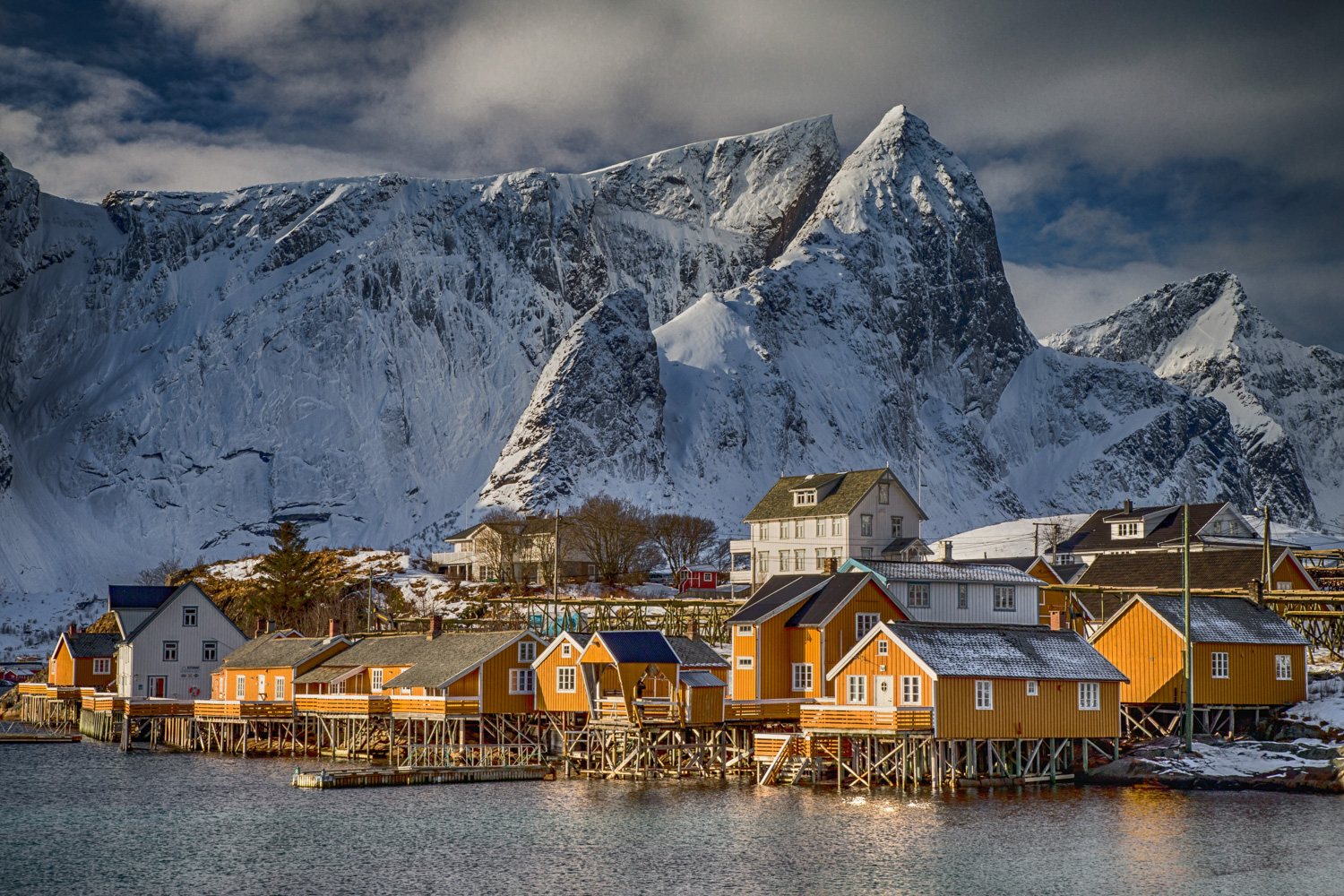Some people might think spending any amount of time 100 miles north of the arctic circle in winter is a weird idea. Perhaps that’s true depending on where and exactly when you’re going to be there. But if you’re going to be in Lofoten in February, it’s a brilliant idea.
This famous archipelago off the northwest coast of Norway is one of the world’s most picturesque, characterized by jagged mountain peaks protruding out of crystal-clear fjords. It’s a stunning place to visit just about any time of year, but late winter bestows a unique photogenic edge that’s unique to this area. Although the weather can sometimes look discouraging from the confines of a cozy cabin, once you’re out in the elements with the right gear, the photographic potential is incredibly motivating.
I’ve created some of my favorite images of all time in Lofoten for just this reason. Dramatic weather and dynamic light combined with rugged landscapes is a combination made in photography heaven. And when this incredibly mountainous landscape is adorned with pure white snow, textures and dimensions are revealed in ways not possible in other seasons.
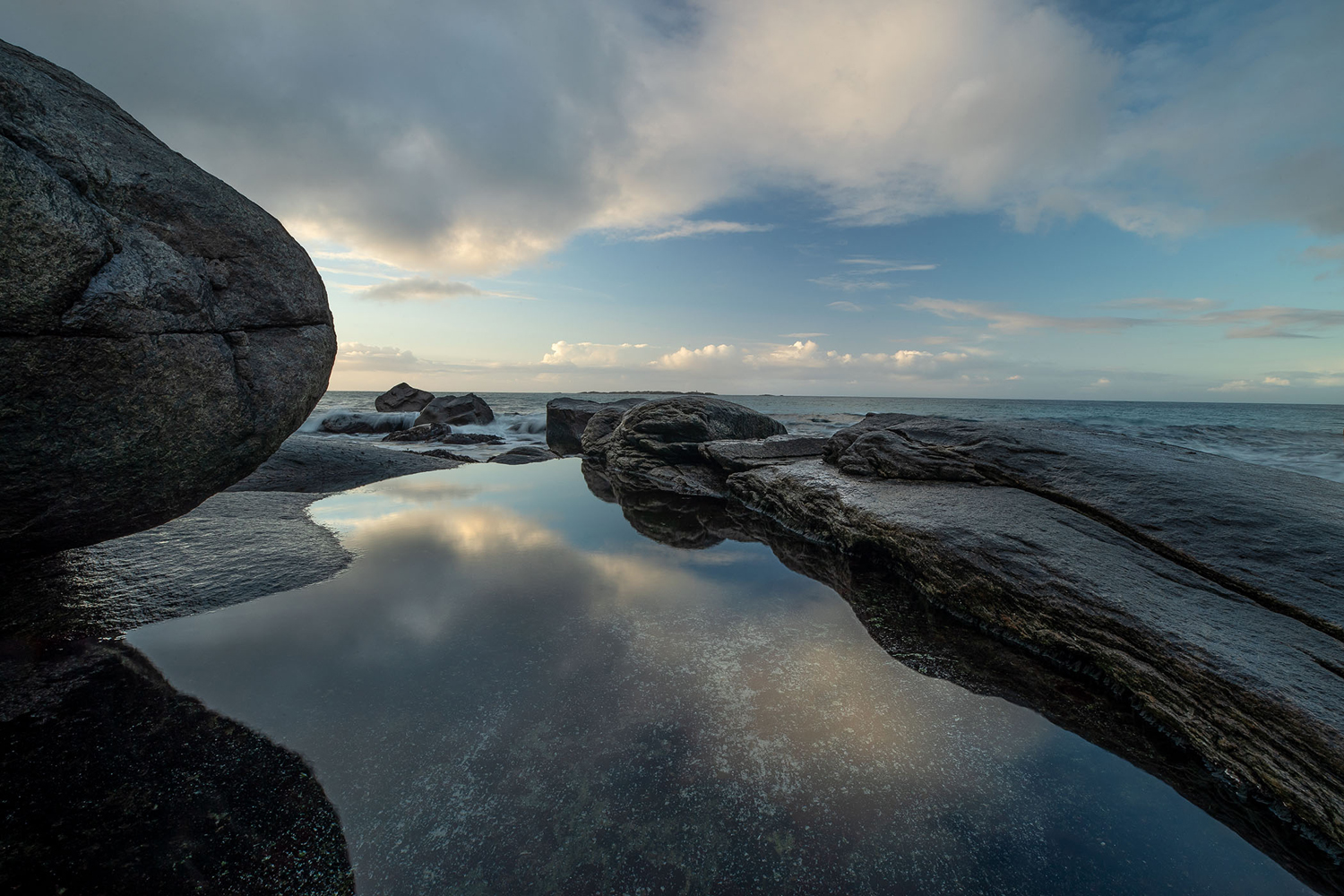
Another trait of this latitude is the unique quality of light at this time of year. Sunlight is soft and subtle while cloudy light combined with a nearly monochromatic landscape allows more subtle colors to be seen and appreciated. Lofoten is the kind of place that rewards your creative effort and attitude.
The following are some highlights from each day during our week exploring the wonders of this amazing location.
Friday, February 16
Our Lofoten journey began in the small city of Harstad, a regional port with Bronze age roots that was established in 1904. Today, with upscale hotels and shopping areas, it serves as a resourceful hub and jumping off point to many Lofoten excursions. After enjoying a beautiful breakfast buffet at our hotel along the Harstad waterfront, we loaded our vans and began the stunning drive to the southwest along beautiful, snow-covered roads.
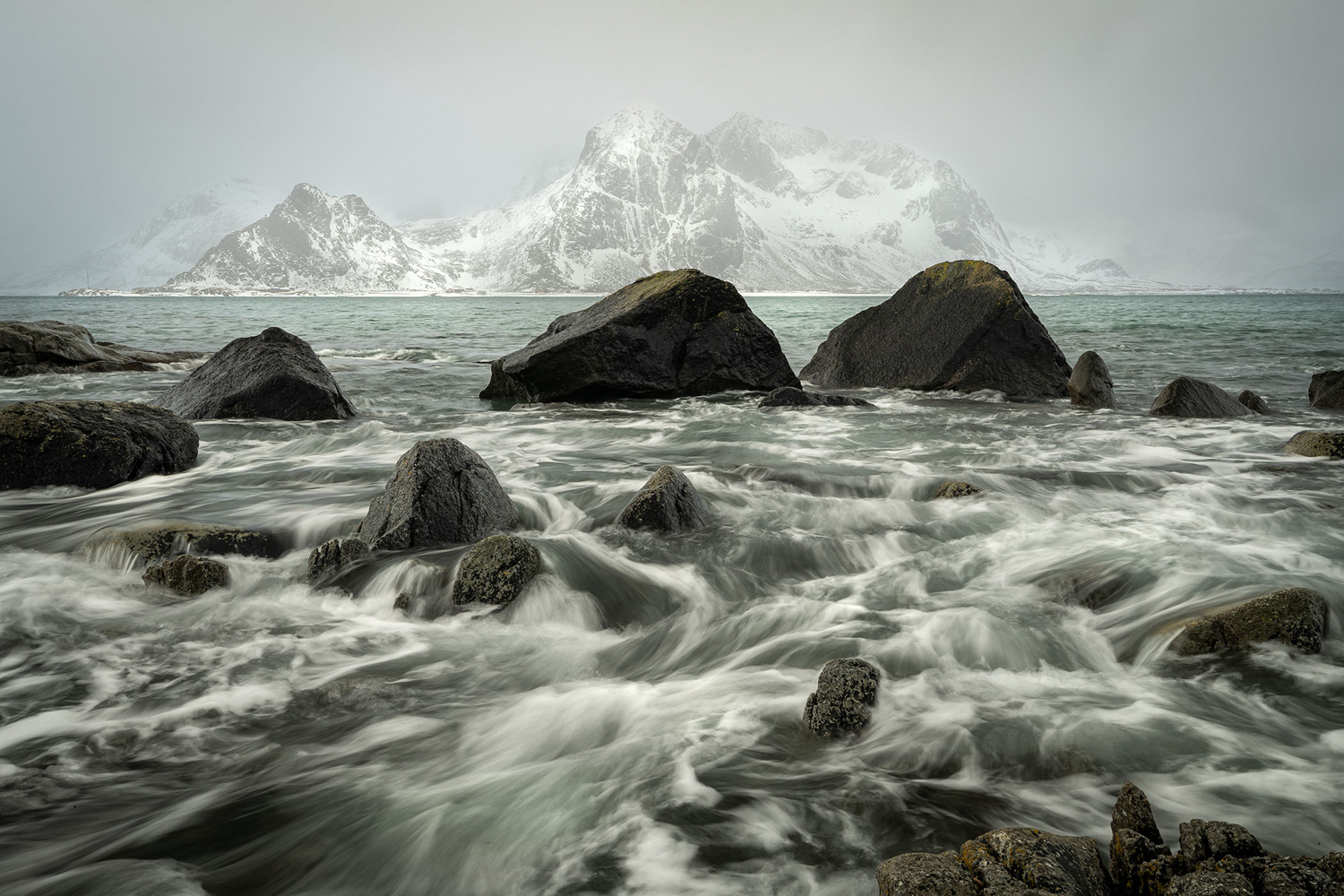
Along with a few pit stops to break up our 4-hour drive, we stopped at Austnesfjorden, a scenic overlook with 180 degree views of the fjord surrounded by jagged peaks emerging from the clouds and freshly frosted by rime ice. As light and shadow played across the mountains and cool ocean air enveloped us, it felt like jetlag was subsiding and we were waking up into a Nordic dreamscape.
Saturday, February 17
Due to a cloudy forecast for the morning, we initially planned on beginning the day with some breakfast at the hotel’s cozy restaurant. Once fed and caffeinated, the plan was to head out and explore the immediate surroundings of Hamnoy, the place made famous by small red cabins perched on a rocky shore set below rugged mountains.
Thankfully, the plan fell apart rapidly as I was pouring a cup of coffee and heard my cabin-mate and client Phil say “ooh!” as he looked out the window over the kitchen table. I said, “What?” He said, “Looks like some light on the horizon”. It just so happened that the kitchen window of our cabin faced to the southeast, from where I could clearly see a gap of clear air between the horizon and the thick blanket of clouds overhead.
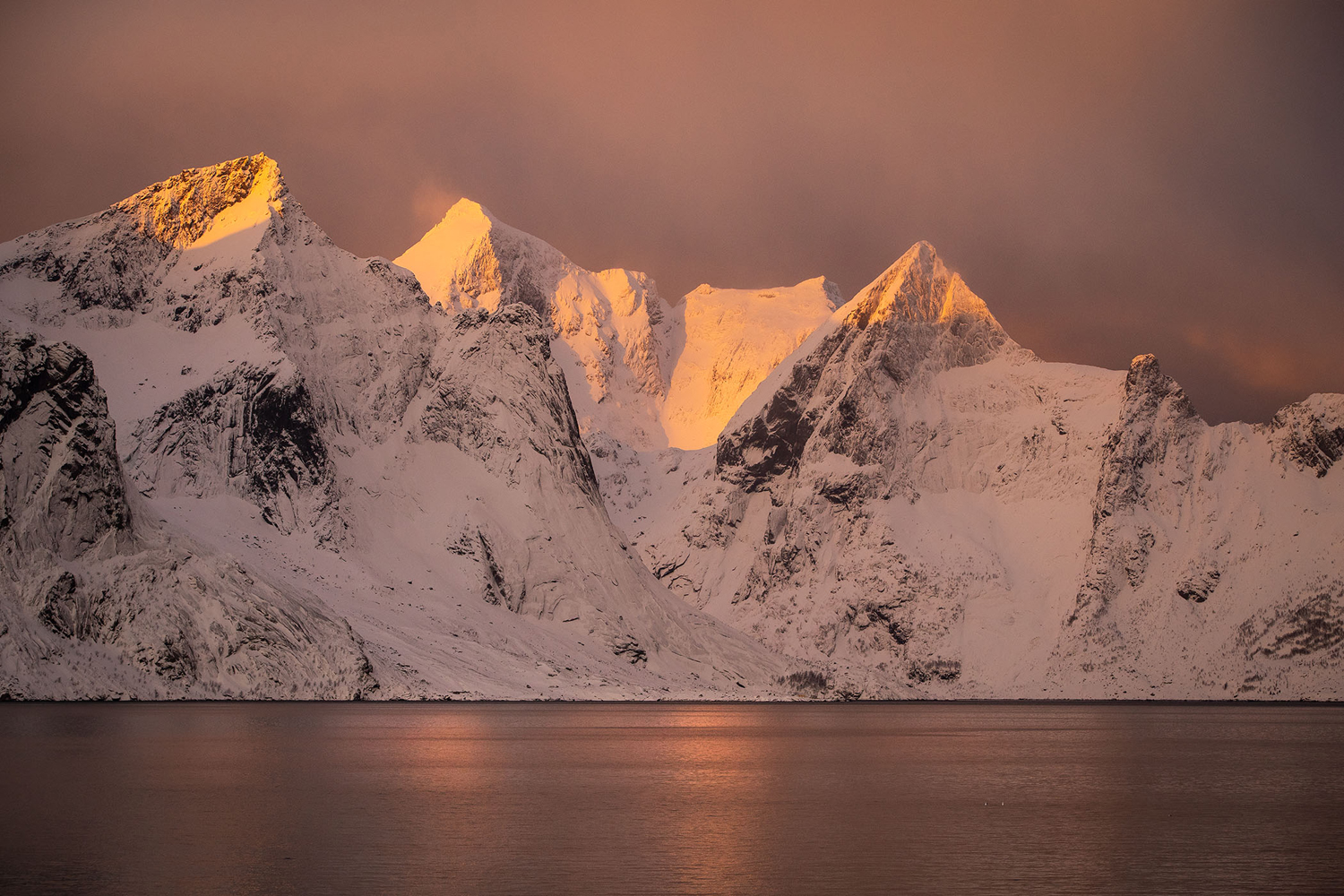
The sight of that gap on the horizon provided a better jolt of energy than any cup of coffee, and my wheels started spinning. After a quick check of the sunrise’s azimuth, I discovered the sun would come up right through that gap—if it stayed open long enough. If the gap held, the sunlight would undercut the clouds and illuminate the mountainous landscape on the other side of the bay, for at least a few minutes.
I double checked the data and sounded the “Sunrise Alert” on the group chat we set up to communicate with everyone for moments just like this, especially since everyone stays at different cabins around the campus of our hotel. We scrambled out of our cabins, putting breakfast on ice as we headed out onto the frozen landscape to a suitable vantage point. Thankfully the gap held, and brilliant warm light illuminated the mountains and simultaneous snow showers like a golden spotlight. You read that right – it can snow and be sunny at the same time there. What a gift to start the first official day of shooting.
Sunday, February 18
After shooting several locations around the bay at Reine, we drove down to the southernmost point of Lofoten, just past a town called Å. Yep, that’s it— a one letter town that happens to be an “A” with a little circle on it, pronounced like “O”, as in “Oh, this is as far as we can go!” Well, there are actually a few more islands to the southeast of this point, but none you can drive to. The end of the road was the beginning of sublime photo opportunities, including ice formations, distant ocean landscapes and elevated platforms with wave-action foregrounds.
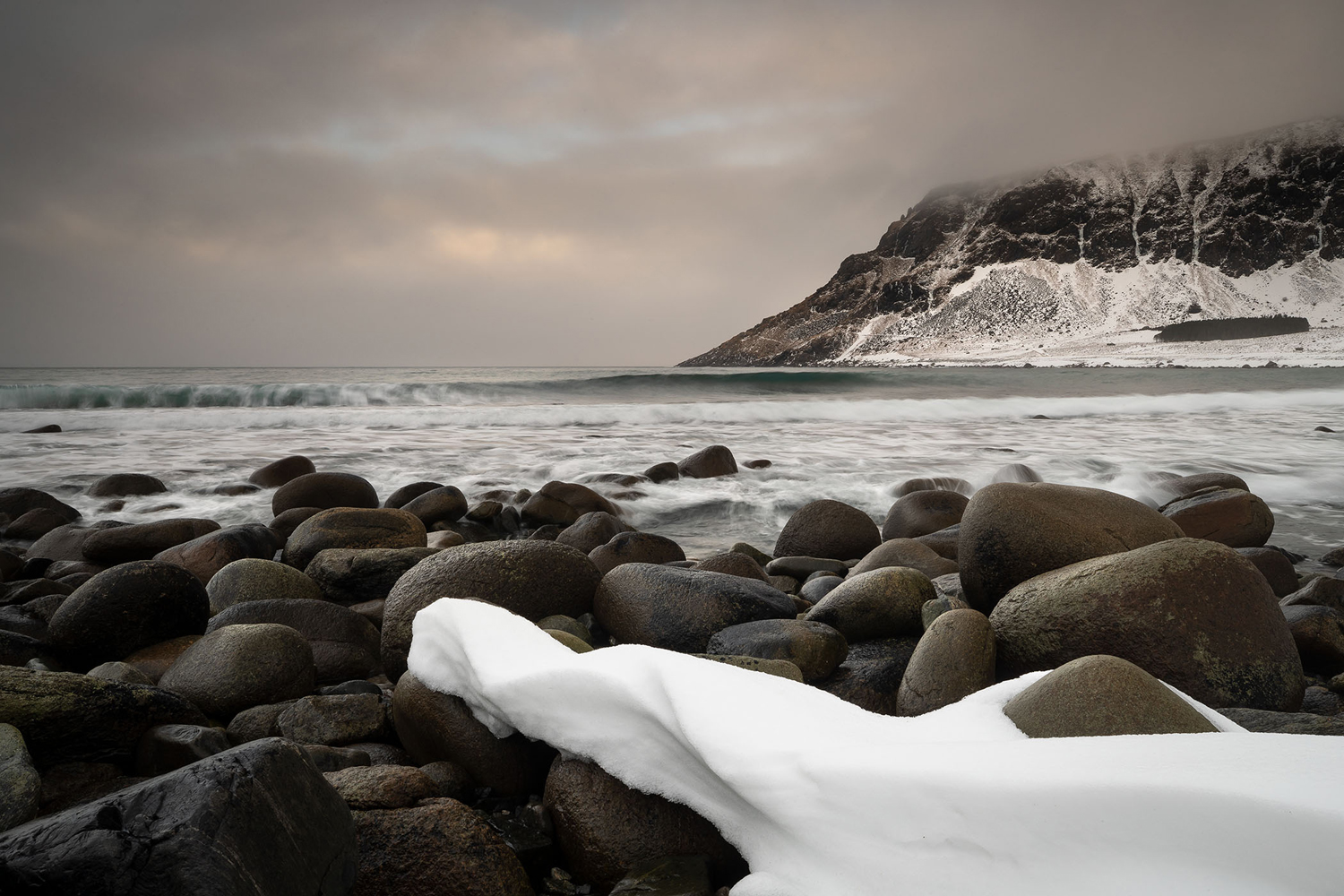
It was here that I first noticed my eyes starting to recalibrate to more subtle shades of gray, steel blue and subtle yet beautiful earth tones. A few native pine trees, set against the monochromatic background, suddenly looked incredibly verdant. A cloudy day north of the arctic circle results in a type of visual sensory deprivation, where in the absence of strong color, you start to notice more subtle colors and textures that become surprisingly enchanting. I suppose it’s akin to an astronaut coming back from a long mission of freeze-dried meals and finally tasting a juicy apple. We had brought ourselves to another planet called Lofoten to relearn the beauty of subtle color and texture. It was affirmation that the most beautiful landscapes are not always adorned with brilliant hues.
Monday, February 19
On our way to a new base camp in Mortsund, we stopped at the historic fishing village of Nusfjord, tucked into a small bay along the southern coast of Lofoten. Nusfjord is a gem, and also a UNESCO World Heritage site that has been one of Lofoten’s most important fishing harbors for centuries.
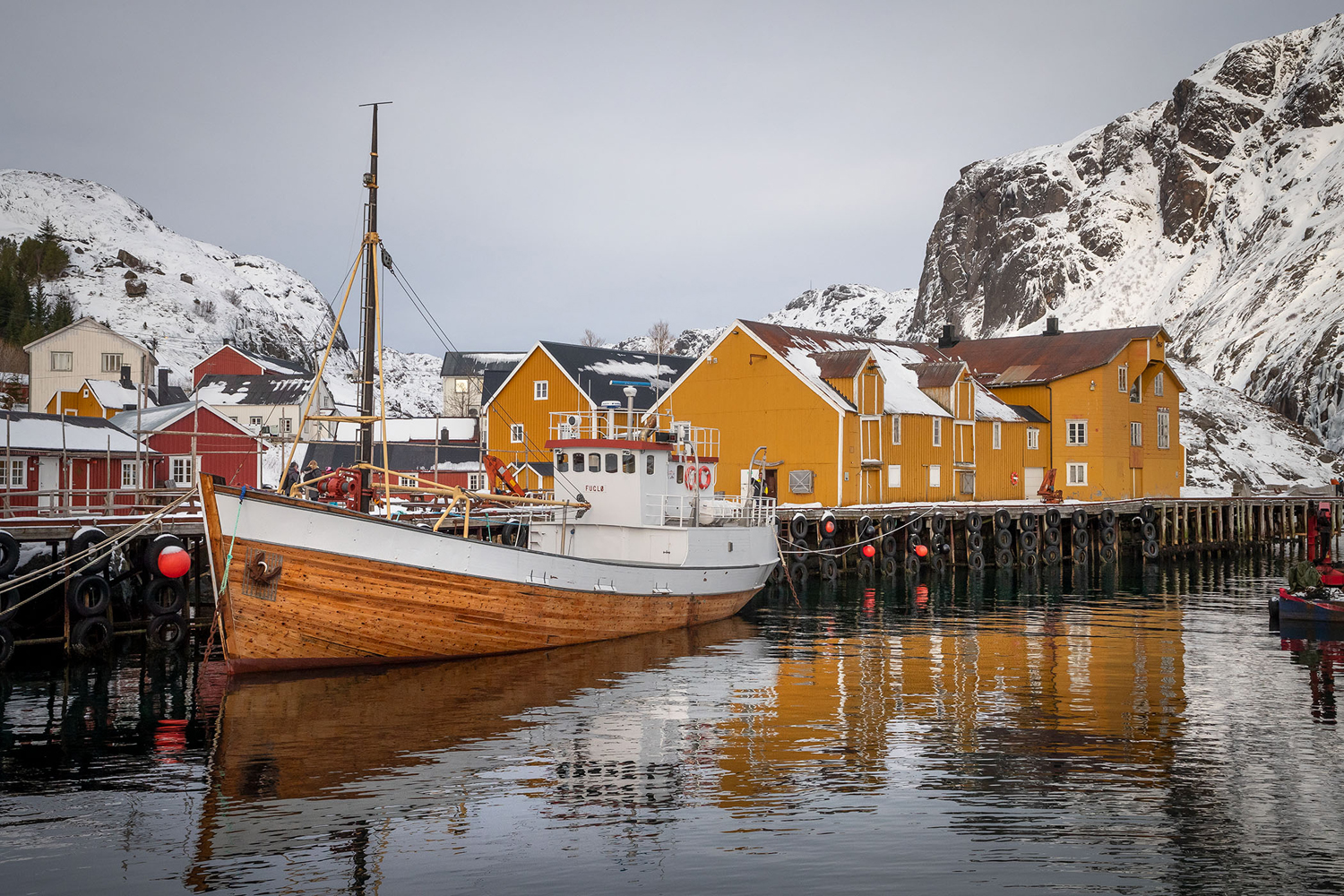
Today, it’s a bit of a tourist magnet but certainly well worth visiting and photographing. It’s wonderfully preserved, featuring traditional bright yellow and red cabins and buildings, some held up by stones underneath their corners, fishing boats, and an old general store that serves as both a cafe and a museum of dry goods and products that were used back in the day.
The town, along with all its nautical details, provided a visual counterpoint to all the landscape photography while also providing a glimpse into the cultural history that makes this region of the world so unique.
Tuesday, February 20
According to the sign outside the cafe in Unstad, a tiny place that is known more for its surfing than photography, this is home to the “World’s Best Cinnamon Buns”. That’s quite a claim way out here in the hinterlands above the Arctic Circle but I have to admit, the photos along the beach were great, but the cinnamon buns were arguably the highlight of the day. Forget about Cinnabon or any of that commercial, mass-produced junk—these are totally homemade, seemingly by a Norwegian grandmother in a hand-knitted sweater and candle-lit cabin in the woods. They are incredibly flavorful, not too sweet, and served on a beautiful rectangular piece of slate with fruit and whipped cream.
Enough said.
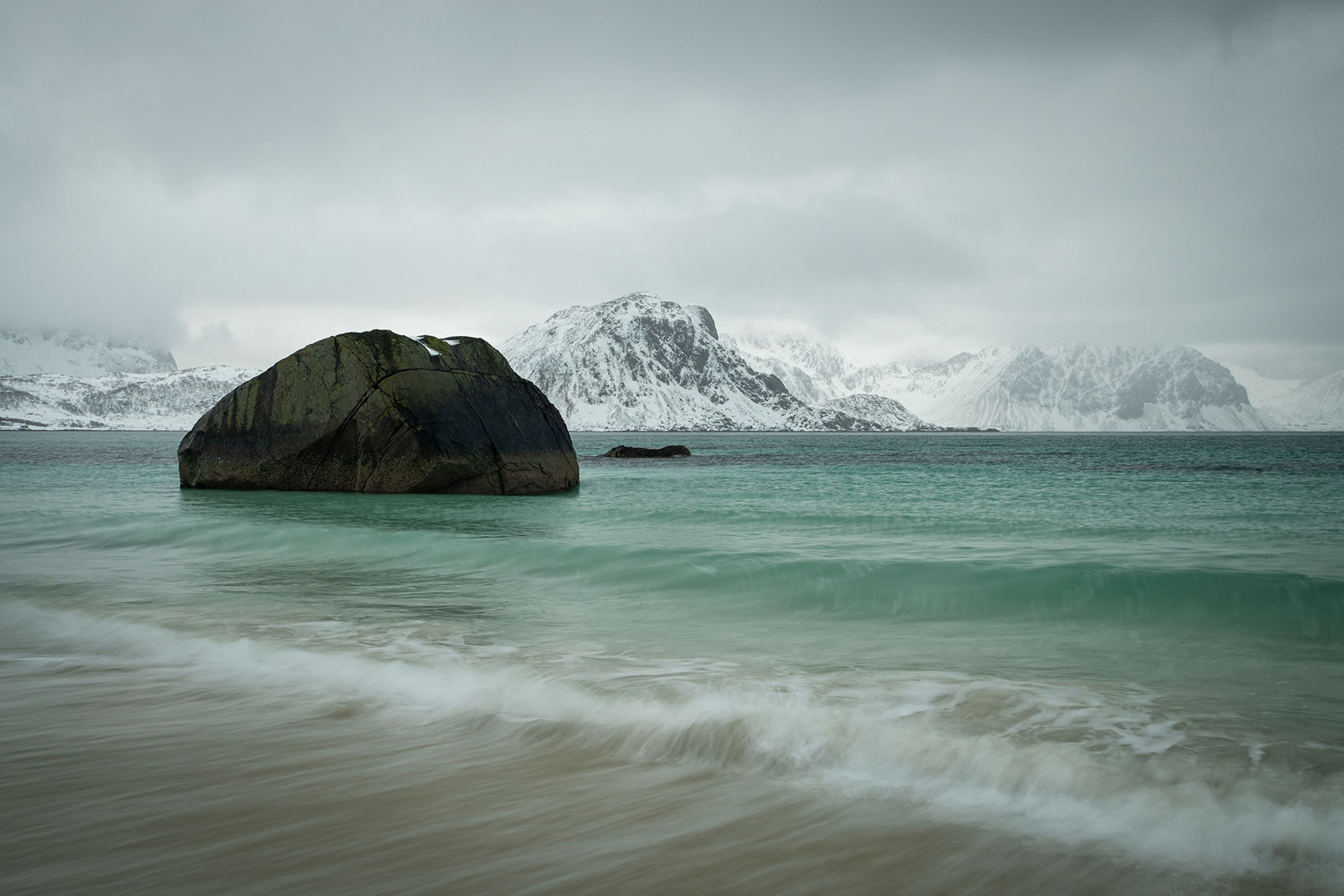
Oh, and the beach imagery was pretty cool too, because Unstad is a rare location that features a long stretch of rounded rocks along the shore, anywhere from two to four feet in diameter. The wave action amongst these rocks was perfect at the tide level we had, creating beautiful wispy circular patterns set against a dramatic backdrop. I should add that the reason we came to Unstad was to escape the rainy weather everywhere else that morning. Since the weather pattern was coming from the southwest, we decided to head over the mountains to the leeward side and presto—no rain, no wind, and even a little patch of blue sky hovering over our local horizon.
Wednesday, February 21
Ah, the coast of Vareid—perhaps my favorite little stretch of shoreline in Lofoten. This relatively small section of coast doesn’t look like anything from the road, and thankfully a road less travelled too. But once you’re out of the car and exploring the rugged boundary between earth and ocean, the possibilities emerge, and time stands still. This is one of those places that pull you into that hypnotic “zone” of photography.
Vareid is also one of my favorite places because not many people know about it or come to photograph it. We typically have it to ourselves, except for a few curious smartphone shooters who stop only because we are out there with our tripods wedged amongst the rocks.
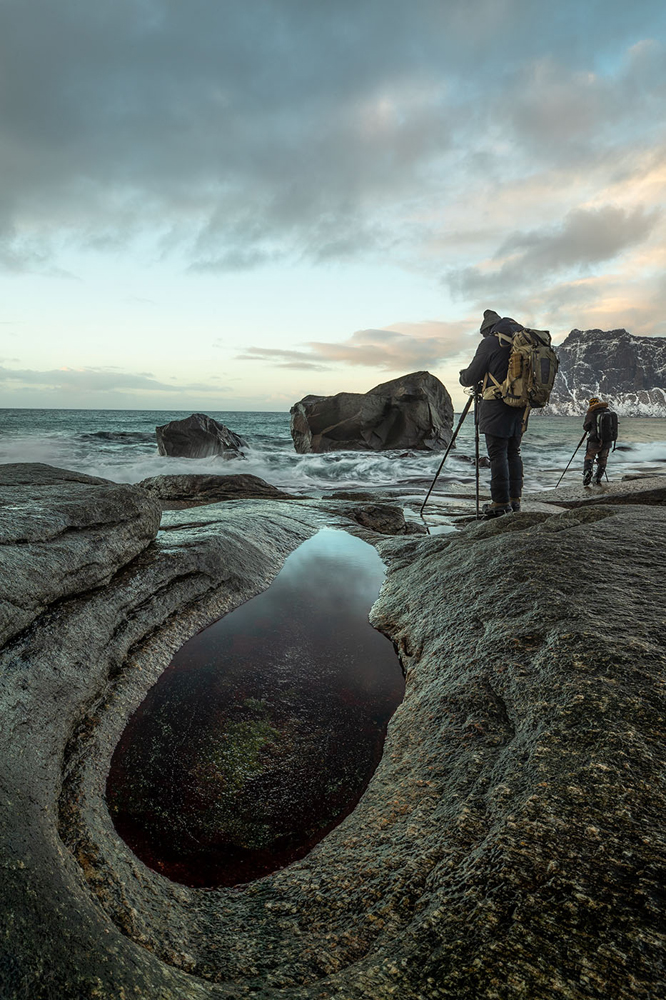
As far as foregrounds go, it’s a treasure chest of blocky angular boulders and splash pools with mirror-like reflections. Waves are more playful than threatening, allowing you to get close to capture all their texture and motion. And as far as backgrounds go, it’s simply stunning. The view across the fjord never disappoints, and on this day, broken clouds were moving swiftly across the mountains, allowing the sun to beam down on individual peaks and on us from time to time as well. We all shot way too many photos, but thankfully we were finally chased off by an approaching rainstorm—just in time for lunch.
Thursday, February 22
Sadly, it was the final day of our Lofoten tour. Along the road back to Harstad, we stopped in Henningsvaer, an active fishing town along the southern coast. The town dates to the 1550’s and features one of the most picturesque harbors I’ve ever seen. From the storm wall that protects the harbor and serves as a main thoroughfare, the view up the harbor looks like a movie set. Fishing boats are double parked along the sides, sometimes unloading their catch while seagulls swarm above looking for scraps. A procession of quaint buildings and houses line each side and square in the back is Festvågtind, a mountain that rises 1800 vertical feet above the harbor. And to boot, the tranquil waters create beautiful reflections and colorful patterns for anyone seeking abstracts and details. And, oh, yeah, they have a cozy cafe with an amazing bakery there too! It’s a good thing it’s cold there—it helps burn all those extra calories.
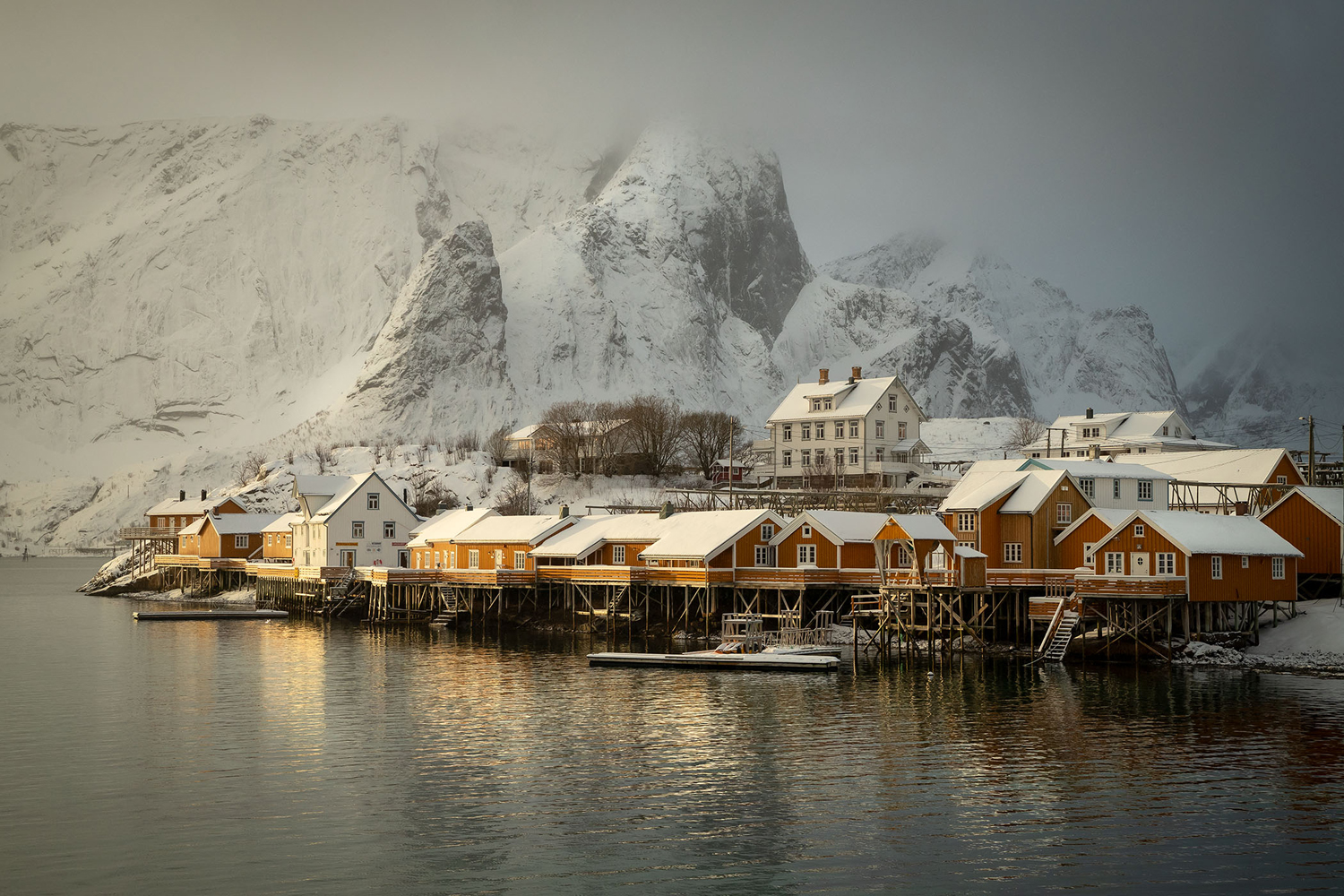
In conclusion, Lofoten is one of those places you need to experience in person once in your life, especially as a photographer. There’s simply no other place like it. And again, with the right clothing, equipment, mindset, and guidance, it will reveal all its beauty, both grand and subtle.

